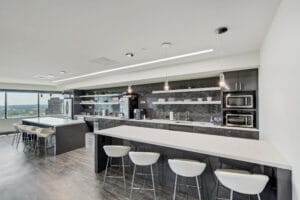Commercial Real Estate Leasing FAQs
Silver Star Properties leasing agents answer frequently asked questions about commercial leasing. Watch this leasing education video to learn more:
Silver Star Properties leasing agents answer frequently asked questions about commercial leasing. Watch this leasing education video to learn more:
Our leasing agents help prospective tenants calculate their office space needs by visiting and looking at their current office space then gathering more information such as how long have they been in business and what their daily business needs are. Common business needs to consider when searching for new space could include:

When negotiating commercial lease terms, excellent questions for tenants to ask their leasing agent are:
Commercial leases are advertised in several different ways. The most common commercial lease structures are:
At Silver Star Properties, we operate our properties with triple net leases. The advantage of a triple net lease is that it’s more transparent. Tenants know exactly what they are paying for the space and their operating expenses.
 When should you start looking for office space?
When should you start looking for office space?A customer looking for office space should start looking as soon as possible, no less than three months.
At Silver Star Properties, we can accommodate tenants at any point in the search process, even those delayed in their search for office space and have to move in immediately. We own a significant number of office buildings and other commercial spaces which allows us to offer made-ready and move-in ready commercial spaces.
Silver Star Properties can also accommodate construction needs if a tenant desires any unique build-outs.
At Silver Star Properties, we strive to make the customer feel important from the moment they walk through the door. Our leasing team will roll out the red carpet and provide them the same white glove service we have offered for the last 39 years.
Whether a customer is looking for a thousand square feet or ten thousand square feet, our leasing team will take the time and the energy it takes to get them in the right space. Learn more about Why You Should Lease with Us.
Our responsiveness sets us apart from our competitors. Our leasing agents will return phone calls and always show up in-person for tours. We also have our on-site property management team that is there to answer any questions.
When you lease with Silver Star Properties, you’ll know exactly what you’re paying. It will have the following:
Tenant expenses such as phone service and internet cable drops for networking are not included. We recommend factoring tenant specific expenses into your budget.
“Commercial properties” is the larger category within which retail or office spaces fall. In other words, any space in which you do business is considered a commercial space.
This can be achieved by contacting a leasing agent. An agent can help you tour properties and once you find a suitable space, help you negotiate lease terms.
Lease negotiations can take anywhere from a few days to a few months.
Better time management, networking opportunities, building company culture, and productivity.
Usable square feet (USF) is defined as the total usable floor area of a building. It is measured from the outside of exterior walls and windows and also includes interior walls, hallways, and common areas.